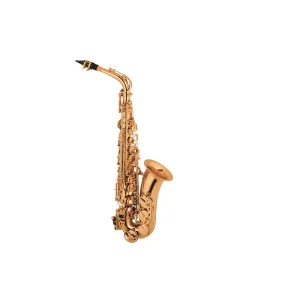В эпоху Возрождения (15-16 века), духовые инструменты играли важную роль в религиозной, светской и придворной музыке. Их тональные качества и развивающаяся техника исполнения оказали глубокое влияние на музыкальные стили того времени. Ниже представлены наиболее представительные и важные духовые инструменты этого периода:

I. Деревянные духовые инструменты
1. Диктофон
- Особенности и применение:
Один из самых популярных деревянных духовых инструментов эпохи Возрождения. У него чистый, мягкий тон и широкий диапазон (обычно две октавы). Бывает разных размеров: сопрано, альт, тенор и бас. Использовался как соло, так и в ансамбле (например, в квинтетах), а также в качестве аккомпанемента. - Музыкальный контекст:
Широко используется в светской музыке, такой как пасторальные песни и придворные танцы (например, pavane, galliard). Также встречается в религиозной музыке, например, в мотетах и мессах, часто в сочетании с вокалом или другими инструментами. - Применение:
Такие композиторы, как Джон Булл и Орландо ди Лассо, создавали консортную музыку с участием скрипок.
2. Шаум
- Особенности и применение:
Предшественник современного гобоя, обладающий громким, грубым тоном и значительным объемом, идеально подходит для игры на открытом воздухе или в торжественных случаях. Он имеет коническое отверстие и играется с помощью двойной дудочки. - Музыкальный контекст:
Обычно используется в военных оркестрах, придворных процессиях, народных танцах или в духовых ансамблях с такими инструментами, как сакбуты, создавая яркий звуковой эффект. - Применение:
Основной инструмент "вайтов" (городских музыкантов), который использовался на гражданских праздниках и знатных банкетах.
3. Корнет (Корнетто)
- Особенности и применение:
Изготовлен из дерева с мундштуком, похожим на латунь, и отверстиями для пальцев, как у рекордера. Тон сочетает в себе теплоту деревянных духовых и блеск медных. Обладает высокой гибкостью диапазона и способностью к полифоническим линиям. - Музыкальный контекст:
Использовался в церковной музыке, часто в паре с хоровым пением (в частности, в венецианских многохорных произведениях), а также служил мелодическим сопровождением в придворных ансамблях. - Применение:
Джованни Габриели Symphoniae Sacrae В нем звучит корнет в сочетании с духовыми и струнными инструментами.
4. Крамхорн
- Особенности и применение:
Изогнутый двухголосый инструмент с носовым и приглушенным тембром. Выпускался в различных диапазонах (сопрано, альт, бас) и использовался в основном в консортах (например, квинтетах крамхорнов). - Музыкальный контекст:
Появлялся в светской камерной музыке, сопровождая поэзию или пасторальные танцевальные мелодии, и хорошо сочетался с такими инструментами, как рекордер или лютня.
II. Духовые инструменты
1. Сакбут (предшественник современного тромбон)
- Особенности и применение:
Ранний слайд-тромбон, без клапанов. Его звучание торжественное и полное, с широким диапазоном, подходящим для плавных мелодичных или гармоничных басовых линий. - Музыкальный контекст:
Используется в церковной музыке для поддержки полифонической фактуры (например, в мессах или мотетах), а также в придворных ансамблях с трубами и корнетами для создания грандиозных звуковых ландшафтов. - Применение:
Жоскен де Пре использовал сакбуты для обогащения нижних голосов в своих духовных произведениях.
2. Натуральная труба
- Особенности и применение:
Бесклапанный труба инструмент, который извлекал ноты с помощью естественных обертонов и искусного амбушюра. Яркий и величественный по тону, он был ограничен высшим гармоническим рядом. - Музыкальный контекст:
Занимает видное место в придворных церемониях, аристократических праздниках и религиозных фестивалях, символизируя власть и величие. Часто используется в паре с барабанами в процессиях или в вокальных произведениях для орнаментальных пассажей. - Применение:
Во время правления короля Генриха VIII натуральная труба была основным церемониальным инструментом, который использовался в произведениях Джона Тавернера.
3. Корнет (медный)
- Особенности и применение:
Ранний духовой инструмент, напоминающий трубу, но с более узким отверстием. Благодаря более мягкому тону и способности воспроизводить полутона он подходил для камерной музыки или сочетания с деревянными духовыми. - Музыкальный контекст:
Играл мелодические линии в танцевальной музыке или небольших ансамблях, а также оказывал гармоническую поддержку в духовных композициях наряду с корнетами и сакбутами.
III. Духовой клавишный инструмент: Орган
- Особенности и применение:
Хотя орган является клавишным инструментом, он издает звук с помощью духовых труб и занимал центральное место в церковной музыке эпохи Возрождения. Он использовался для сопровождения месс, исполнения прелюдий или самостоятельных религиозных произведений. Орган мог имитировать многие тона духовых инструментов с помощью стоп, создавая величественные или деликатные эффекты. - Музыкальный контекст:
В основном используется в литургической среде - в сопровождении хоров в мотетах или для импровизационных прелюдий до и после служб. В венецианской школе такие композиторы, как Андреа Габриэли, стали пионерами полихоральной техники, используя хоры и орган вместе.
IV. Другие известные духовые инструменты
1. Волынка
- Особенности и применение:
- Народный инструмент, использующий воздушную подушку для непрерывной подачи воздуха. Земляной по тону, обычно используется в сельских танцах или на праздничных мероприятиях, отражая сильные местные традиции.
2. Пан-флейта
- Особенности и применение:
- Серия бамбуковых труб разной длины, известных своим неземным, мягким тоном, вызывающим пасторальные образы. Часто используется в мадригалах или пасторальных пьесах, например, в сценах из романа Торквато Тассо Аминта.
Реферат: Роль и влияние духовых инструментов
- В религиозной музыке: такие инструменты, как орган, корнет и сакбут, поддерживали полифонические церковные композиции, усиливая священную гармонию и величие (например, римская и венецианская школы).
- В светской и придворной музыке: такие инструменты, как рекордер, шаум и натуральная труба, использовались в танцах, шансонах и церемониальной музыке, отражая ренессансный идеал мелодической красоты и выразительной звучности.
- Технический прогресс: Разнообразные и развивающиеся духовые инструменты эпохи Возрождения заложили основу для барочных инноваций (например, трубы с клапанами, предшественники современного гобоя) и способствовали развитию полифонической композиции и форм инструментальных ансамблей.
Мы являемся профессиональным производитель музыкальных инструментов. Если вы хотите узнать больше о духовые инструментыПожалуйста связаться с нами!







